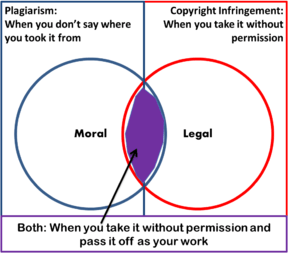Plagiarism and copying

The Difference between Plagiarism and Copying is given here. In copyright, the clear difference between the action of copying and the action of plagiarizing is framed, since the act has an ethical and professional charge. Plagiarizing is stealing an idea, information or material created by another person by pretending to be one’s own, while copying is using information giving recognition to the author.
keep reading…
Plagiarism
Plagiarism is a criminal and unethical action, by means of which an individual uses the creative work of another person without acknowledging its authorship, that is, steals the idea or information that this person created, attributing it as his or her work. In plagiarism, the stolen material is rarely modified, they are usually exact copies.
Plagiarism is a fraud, a crime that can be penalized with years in jail, or very high fines depending on the claim. Therefore, authors must patent their work or brand, and in this way protect it according to the rules established in copyright laws.
Copy
Copying does not necessarily mean stealing information. Many times people copy the style of some authors or even ideas, but you can create totally different materials.
Copying also applies to transcribing content or replicating information already made by another person but without ensuring authorship.
When copying, the writer has the option of redirecting readers to the sources of the information or naming the original author. Although it is not entirely necessary if you have only used one model as a mold, the content is different.
It does not necessarily acquire a criminal charge, it depends on the intention of the action.
suggested video: Plagiarism vs Copying
Difference between Plagiarism and Copying
- Plagiarism is a crime.
- Copying is not clearly penalized.
- Plagiarism is stealing an idea.
- Copying is using someone else’s idea to create a new one or to quote it.
- Plagiarizing is an uncreative action.
- Copying can be a way to encourage creativity.